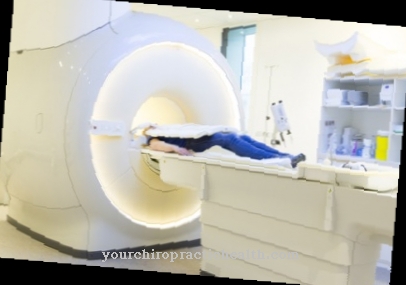With the Neutral zero method The orthopedic surgeon evaluates and documents the range of motion of a joint using a three-digit code that is indexically valid and can be traced back to the insurance industry.
With the neutral-zero method, the patient initially stands in the neutral position of all joints and, on request, moves the joints individually away from the body and towards the body, the mobility being indicated in the form of an angle around the respective movement axis.
Above all, expert opinions within the framework of statutory accident insurance, private insurance or a social court report can be carried out with the neutral zero method, but the method is also relevant in the purely clinical area and is used here in particular to assess illness or accident-related restrictions in the Everyday life.
What is the neutral zero method?

The neutral-zero method is an index used in orthopedics to evaluate and document joint mobility. The index is recorded in the form of a three-digit code. This code indicates the maximum extent of movement of the joint as an angular degree around a specific axis.
The neutral position of the joint marks the starting position. It is synonymous with an angle of zero degrees, as it is in the joints when standing upright with parallel legs, relaxed arms and thumb pointing forward. From this neutral position, the mobility of the neural zero method is determined by deflections in different directions. The first number of the code usually corresponds to a movement away from the body, the second number is the number 0 for the neutral-zero position and the third number describes a movement towards the body.
In individual cases, however, the extent of movement can also be specified in the opposite order. In the case of joints with multiple axes of movement, the orthopedic surgeon records a separate code for each axis. Since the writing is standardized, the range of motion of a joint can be clearly illustrated in reports and letters. This means that the severity of a restricted movement can be made understandable regardless of the institution.
Function, effect & goals
The neutral-zero method is particularly important in connection with an expert opinion. Such a statement may, for example, be required in the context of statutory accident insurance.
Private accident insurances and social court reports also work with the measuring sheets of the statutory accident insurance. The results of the neutral-zero method on the upper and lower extremities are recorded in these measuring sheets. However, the documentation and evaluation process also plays a role on a purely clinical level, since the index can be used to determine the extent of the restriction of movement in everyday life due to illness or accident.
The success of ongoing exercise therapy can also be traced using the neutral-zero method.For this purpose, an initial assessment of the ability to move takes place before the therapy, which is compared with the new data after the completed therapy. In order to use the neutral-zero method, the doctor first has the patient, standing upright, with arms hanging relaxed, legs parallel to each other and thumbs pointing forward, in the neutral-zero position of all joints.
Then he asks the patient to stretch, bend, rotate inside, rotate outside, splay or bring up the respective extremity or the relevant joints. Under certain circumstances, he will also actively give him the desired movement in assistance. Finally, reference angle values exist for the writing of the mobility of each joint. For the shoulder joint, for example, the reference index for abduction and adduction corresponds to the code 180-0-20 to 40.
If the shoulder joint is now impaired in abduction, for example, and can only be brought from the vertical lift to the horizontal position, the doctor maintains a limited range of motion of 90 degrees instead of an unrestricted mobility of 180 degrees. The index would then correspond to 90-0-20 to 40. The angle symbols are usually not recorded in the index of the neutral-zero method, as they are self-explanatory.
You can find your medication here
➔ Medicines for back painRisks, side effects & dangers
The neutral zero method is not associated with any risks or side effects for the patient. It can therefore be carried out on an outpatient basis without any problems. Special features arise from the procedure especially when the neutral-zero position of the joint cannot be reached due to damage.
In this case, the zero is not in the middle of the index, but moves to the side on which there is a deficit in the range of motion. The number of angles then indicates the deficit, with the 0 illustrating the extent of movement itself. The neutral-zero method cannot be used for statistical evaluations. To do this, the angle information for the individual movements is extracted from the index, added up and an average of the general extent of movement is calculated.
In most countries there is no such thing as the neutral-zero method and the range of motion is always given as an average of the individual angles. The neutral-zero method has a special position in Germany in the context of spasticity. With fast movements, a spastic muscle contracts much earlier and thus reduces the range of movement in everyday life. In this clinical picture, the doctor differentiates during the method between the range of motion with passive slow motion and passive rapid motion in order to correspond to the range of the spastically restricted motion.

























.jpg)

.jpg)
